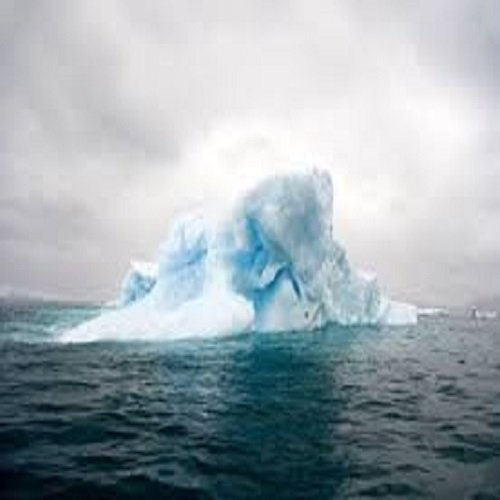BWMS Sensor Calibration Explained Avoiding Errors and Fines
Ballast Water Management Systems (BWMS) play a crucial role in preventing the spread of invasive aquatic species by ensuring that discharged ballast water meets environmental standards. A key component of BWMS is its sensors, which monitor critical parameters such as turbidity, salinity, and UV intensity. However, without regular calibration, these sensors may provide inaccurate readings, leading to ineffective ballast water treatment and potential non-compliance with international regulations. Proper calibration of BWMS sensors ensures operational efficiency and regulatory adherence.

Ballast Water Management Systems (BWMS) play a crucial role in preventing the spread of invasive aquatic species by ensuring that discharged ballast water meets environmental standards. A key component of BWMS is its sensors, which monitor critical parameters such as turbidity, salinity, and UV intensity. However, without regular calibration, these sensors may provide inaccurate readings, leading to ineffective ballast water treatment and potential non-compliance with international regulations. Proper calibration of BWMS sensors ensures operational efficiency and regulatory adherence.
2. What Is BWMS Sensor Calibration?
BWMS sensor calibration is the process of adjusting and verifying sensor readings to ensure accuracy in measuring ballast water parameters. Over time, sensors may drift due to environmental conditions, aging, or contamination, making calibration essential. Key sensors that require calibration include:
-
Turbidity Sensors: Measure water clarity to assess the presence of particulate matter.
-
Salinity Sensors: Monitor salt concentration, ensuring correct ballast water exchange.
-
UV Sensors: Measure ultraviolet light intensity to confirm proper disinfection.
Calibration should be performed at manufacturer-recommended intervals to maintain precise operation and prevent regulatory violations.
3. Why Is BWMS Sensor Calibration Essential?
Proper sensor calibration is critical for multiple reasons:
-
Ensuring Effective Ballast Water Treatment: Accurate sensor readings help the system function correctly, reducing the risk of untreated water discharge.
-
Regulatory Compliance: Calibration ensures adherence to International Maritime Organization (IMO) and United States Coast Guard (USCG) standards.
-
Avoiding Operational Failures: Uncalibrated sensors can lead to system malfunctions, costly fines, and potential vessel detentions.
4. Key Steps in BWMS Sensor Calibration
Pre-Calibration Checks
-
Inspect sensors for physical damage or contamination.
-
Review manufacturer guidelines for calibration frequency and methodology.
-
Ensure the system is in operational condition before proceeding.
Calibration Process
-
Use Standard Reference Solutions: Compare sensor readings against known standards to detect discrepancies.
-
Adjust Sensor Settings: Fine-tune the sensor output to match reference values.
-
Document Calibration Results: Maintain records for audit purposes.
Post-Calibration Verification
-
Conduct system tests to confirm proper operation.
-
Compare pre- and post-calibration readings for consistency.
-
Store calibration data for regulatory inspections.
5. Common Challenges in BWMS Sensor Calibration
Despite its importance, sensor calibration comes with several challenges:
-
Sensor Drift and Degradation: Over time, sensors lose accuracy, requiring frequent recalibration.
-
Environmental Factors: Temperature fluctuations, biofouling, and salinity changes affect sensor performance.
-
Lack of Standardization: Different BWMS manufacturers may have varying calibration procedures, complicating consistency.
6. Best Practices for Effective Calibration
To overcome challenges, vessel operators should follow best practices:
-
Regular Maintenance: Schedule periodic inspections and cleaning to prevent sensor deterioration.
-
Certified Calibration Equipment: Use industry-approved reference tools for accurate calibration.
-
Detailed Record-Keeping: Maintain logs of calibration dates, adjustments, and results to demonstrate compliance during audits.
7. Regulatory Requirements for BWMS Sensor Calibration
International regulations mandate strict adherence to sensor calibration protocols:
-
IMO Ballast Water Management Convention: Requires accurate monitoring to prevent ecological harm.
-
USCG Standards: Demand regular validation of BWMS performance to ensure treatment effectiveness.
-
Port State Control Inspections: Authorities conduct random checks, and uncalibrated sensors may lead to vessel detainment.
8. The Future of BWMS Sensor Calibration
Advancements in technology are improving calibration accuracy and efficiency:
-
Automated Calibration Systems: AI-driven tools can self-adjust sensor readings in real-time.
-
Remote Monitoring: Cloud-based systems allow offsite calibration verification, reducing the need for manual intervention.
-
Enhanced Regulatory Compliance: Stricter enforcement will push for more precise and automated calibration methods.
9. Conclusion
BWMS Sensor Calibration is an essential process that ensures accurate water quality monitoring, regulatory compliance, and operational efficiency. Vessel operators must prioritize routine calibration, adopt best practices, and stay informed about technological advancements to maintain reliable ballast water treatment systems. By doing so, they can prevent costly penalties, reduce environmental impact, and contribute to global maritime sustainability.
What's Your Reaction?

















.jpg)
.jpg)